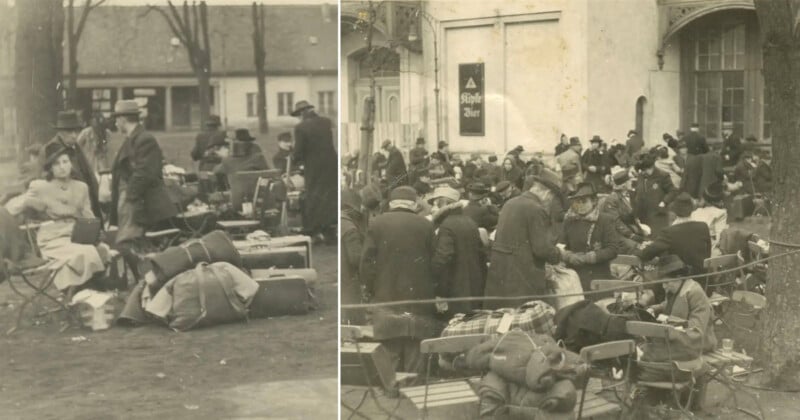Photographer’s Secret Images of Holocaust Victims Being Rounded Up Are Discovered

A trove of clandestine photos taken of Jewish people being rounded up in Nazi-occupied Poland so that they could be murdered has been released for International Holocaust Remembrance Day.
The historically significant photographs taken in 1941 are believed to have been taken by an amateur photographer called Albert Hadda in the city of Breslau which is now Wrocław in Poland.
![]()
![]()
![]()
The images were discovered in a large cache of other photos and were seemingly taken discreetly — some through the window of a car, shop, or house — but others are clearly taken out in the open.
The photos show stacks of luggage piled high as the deportees are guarded by armed Gestapo secret police. People of all ages can be seen in the photos who were taken to Lithuania and shot en masse just a few days after the photos were taken. Only two survived.
“They look quite calm. It seems clear they did not know they were about to be murdered,” German historian Steffen Heidrich tells The Guardian. “This was fairly early in the history of these deportations and so they obviously did not expect it.”
![]()
![]()
![]()
![]()
International Holocaust Remembrance Day was this past Saturday (January 27) and the images were released as part of the project #LastSeen. The organizers hope that by releasing the images, some of the subjects might be recognized.
Who Was The Photographer?
Albert Hadda was married to a non-Jew, therefore he escaped deportation for a while. It is thought that he had access to the area of the city where the victims were taken to be deported; a section that was sealed off to the general public.
![]()
![]()
![]()
![]()
Hadda studied architecture in Germany and worked in Berlin until he was banned from doing so for being Jewish in 1934. His marriage to a Christian saved him from being deported to a concentration camp but he was eventually taken to one in 1944 which he escaped from and hid until Germany was liberated.
Hadda lived in Frankfurt after the war and worked under Bauhaus founder Walter Gropius. He moved to Israel later in life.
Image credits: Photographs by Albert Hadda.